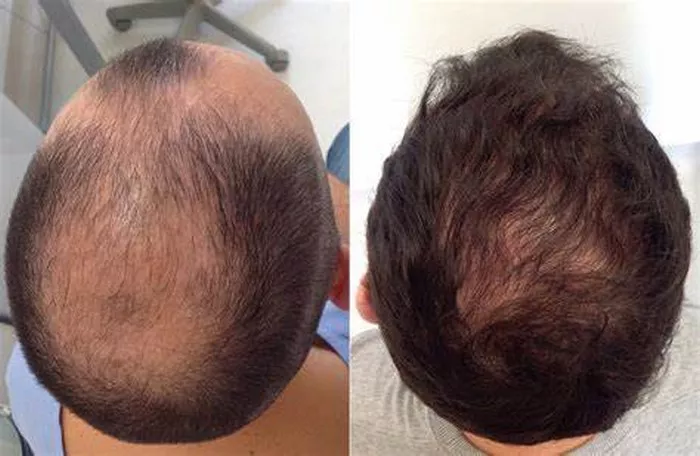Hair loss can be a distressing experience for many individuals, impacting self-confidence and overall appearance. One of the most popular and effective solutions today is hair transplantation. However, a common and important question among prospective patients is: will transplanted hair grow? This article aims to provide a comprehensive understanding of transplanted hair growth, the factors affecting it, and what patients can realistically expect after undergoing the procedure.
What is Hair Transplant Surgery?
Before diving into the growth potential of transplanted hair, it’s essential to understand what hair transplant surgery entails. This surgical procedure involves relocating hair follicles from a part of the body—usually the back or sides of the scalp, where hair is genetically resistant to balding—to the thinning or bald areas. The two main techniques used today are Follicular Unit Extraction (FUE) and Follicular Unit Transplantation (FUT). Both methods aim to create natural-looking hair growth in previously balding regions.
The Science Behind Transplanted Hair Growth
Transplanted hair follicles retain the genetic characteristics of their original location. This means hair taken from the permanent zone of the scalp is generally resistant to the hormone dihydrotestosterone (DHT), which causes androgenetic alopecia (common male or female pattern baldness). Because of this resistance, these follicles are expected to continue growing hair after transplantation.
However, immediately after surgery, the transplanted hairs often fall out in a process called “shock loss.” This can be alarming but is a normal phase. The hair follicles enter a resting phase before new hair growth begins. Typically, new hair starts to appear around 3 to 4 months post-surgery, with significant growth visible by 6 to 9 months. Full results may take up to 12 to 18 months, depending on the individual’s hair growth cycle and healing capacity.
Factors Influencing Transplanted Hair Growth
Although most transplanted hair follicles do grow successfully, several factors can influence the final outcome:
1. Quality of Donor Hair
The donor area’s hair density, texture, and health are critical for a successful transplant. Healthy follicles with good blood supply and robust growth potential produce better results.
2. Surgical Technique and Expertise
The skill of the surgeon and the technique used play vital roles. A precise extraction and implantation minimize follicle damage and improve survival rates.
3. Postoperative Care and Healing
Following the recommended hair transplant recovery protocols is essential. Avoiding trauma, infections, or excessive sun exposure can help follicles survive and thrive.
4. Patient’s Health and Genetics
Individual factors like age, overall health, scalp condition, and genetics affect hair growth speed and density after transplantation.
Will All Transplanted Hair Grow Equally?
Not all transplanted follicles grow at the same rate or density. Some may produce thicker hair, while others grow thinner strands. Additionally, some transplanted hairs may not survive the transfer process, though modern techniques have improved survival rates to over 90% in many cases.
It’s also important to understand that a hair transplant does not stop ongoing hair loss in untreated areas. Patients may require multiple sessions or complementary treatments to maintain a balanced and natural look over time.
Common Concerns About Hair Transplant Growth
Shock Loss and Hair Shedding
Shock loss, or temporary shedding of transplanted and surrounding hairs, can be distressing but usually resolves within a few months as new growth begins.
Patchy or Uneven Growth
Initial growth may appear patchy. This typically improves as hair thickens and follicles mature. Surgeons often design hairline placement and density to create the most natural appearance possible.
Scarring and Hairline Appearance
Some scarring can occur depending on the technique. Skilled surgeons aim to minimize visible scars and create a hairline that suits the patient’s facial structure.
What to Expect After Hair Transplant Surgery
After undergoing hair transplant surgery, patients should prepare for a gradual process rather than immediate transformation. Initial recovery involves some swelling, redness, and crusting around transplanted areas, which typically resolves within 7 to 14 days.
Hair shedding occurs in the first few weeks, followed by a dormant period. New hair growth usually starts after 3 months, with progressive improvement over the following year. Patience is key, as full results can take up to 18 months.
Maintaining Transplanted Hair
To ensure long-lasting results, patients may need to adopt hair care routines and consider medical therapies such as minoxidil or finasteride to support existing hair and prevent further loss. Regular follow-ups with the transplant surgeon help monitor progress and plan any necessary additional treatments.
Conclusion
In summary, transplanted hair generally does grow and can provide a natural, permanent solution to hair loss when performed correctly. The success of hair growth depends on multiple factors, including donor hair quality, surgical expertise, post-surgery care, and individual health conditions.
For those considering a hair restoration procedure, understanding the growth timeline and managing expectations is crucial. With advancements in technique and proper care, a hair transplant can significantly restore appearance and confidence.
If you are exploring options, learning about the hair transplant cost and recovery process can help you prepare both financially and physically for the journey ahead.
Related topics:
- Understanding the Cons of DHI: A Complete Guide
- What Is The Difference Between DHI and FUE?
- How Does Direct Hair Implantation (DHI) Work?


